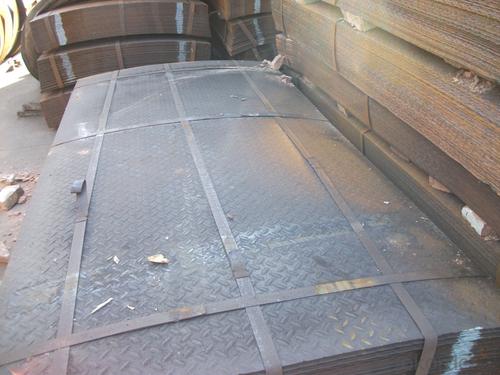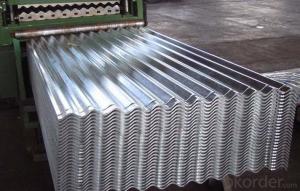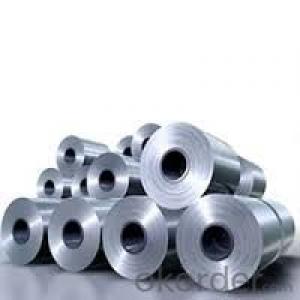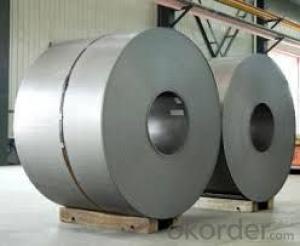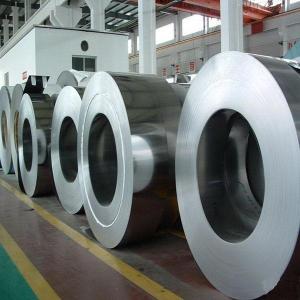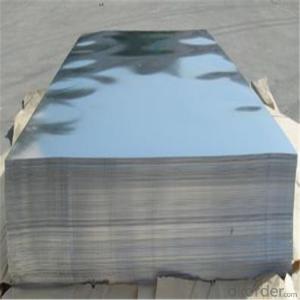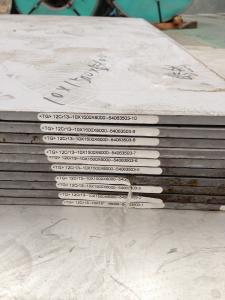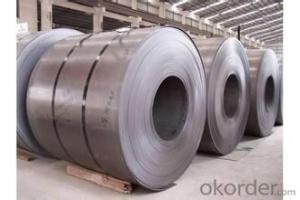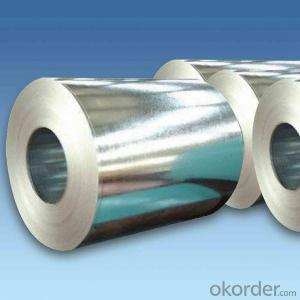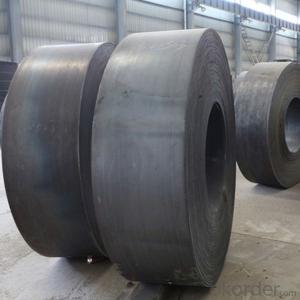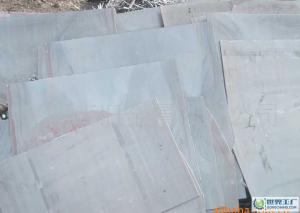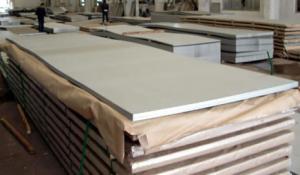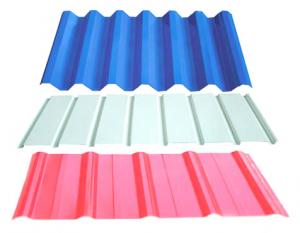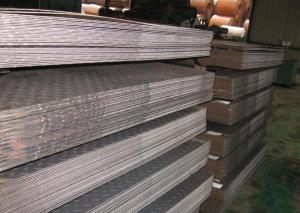HOT ROLLED STEEL SHEET
- Loading Port:
- China Main Port
- Payment Terms:
- TT OR LC
- Min Order Qty:
- -
- Supply Capability:
- -
OKorder Service Pledge
OKorder Financial Service
You Might Also Like
Product Description:
1, carbon steel rimmed steel sheet (GB3274-88)
Steel rimmed steel sheet as the name suggests is made by boiling hot rolled steel plate made of ordinary carbon structural steel. Rimming steel deoxygenation is a complete steel, steel liquid oxygen content is higher, when molten steel after the injection mould, carbon oxygen reaction to produce large amounts of gas, resulting in liquid steel was named after boiling state. Rimming steel with low carbon content, and because no FeSi deoxidization, so steel containing silicon amount <0.07%. Boiling steel outer layer is crystallized in the boiling state, so the surface clean, compact, good surface quality, good processing performance. Rimming steel no large shrinkage hole, deoxidizer used less, low cost of steel. Rimming steel heart of impurities, with the serious segregation, mechanical heterogeneity, more gas in steel, low toughness, cold brittleness and aging sensitivity is larger, the welding performance is poor, so it does not apply to manufacturing under impact load, welding pieces of the structure and other important components work under low temperature.
Steel plate used in the manufacture of all kinds of stamping parts, construction and engineering structure and the structure of the machine is not too important and parts of boiling. The grade, chemical composition and mechanical properties of the material with GB700-79 (88) (technical specification for steel structure of ordinary carbon steel provisions boiling). Hot rolled thick steel plate with thickness of 4.5-200mm. Production units are mainly of Anshan Iron and steel company, Wuhan, Maanshan Iron and steel, TISCO, Chongqing steel, Handan iron and Steel General Factory, Xinyu steel, Liuzhou steel, Anyang steel company, Yingkou plate plant of Tianjin steel and etc..
2 killed steel, plain carbon steel (GB3274-88)
Ordinary carbon steel plate is made of ordinary carbon structural steel hot-rolled steel billet sedation. Deoxidation fully killed steel is steel, steel liquid deoxidation ferromanganese, ferrosilicon and full aluminum ingot casting liquid steel in front, more calm in the mould, does not produce the boiling state, so named for the killed steel. Advantages of killed steel is uniform chemical composition, so the mechanical properties of each part is uniform, the welding performance and good ductility, corrosion resistance is strong. But the surface of poor quality, concentrated shrinkage, higher cost.
Ordinary killed steel is mainly used for structural components, production impact at low temperature welding structure, and other requirements of high strength. The grade, chemical composition and mechanical properties of the material with GB700-79 (88) (technical conditions of steel carbon structure) provisions in killed steel. Size thickness of 4.5-200mm plate. Anshan Iron and steel company, Wuhan Iron and steel are the main production units, Wuyang Steel Corp, Maanshan Iron and steel, TISCO, Chongqing steel, Handan iron and Steel General Factory, Xinyu steel, Liuzhou steel, Anyang, Tianjin, Yingkou Steel Corp steel medium plate plant, a steel, three factory, Shaoguan iron and steel plant and Ji'nan iron and steel factory.
3, low alloy structural steel (GB3274-88)
Low alloy structural steel plate is made of hot rolled low alloy structural steel. Low alloy steel plate is killed steel and semi killed steel sheet. The utility model has the advantages of high strength, good performance, can save large amounts of steel, reduce the structure weight etc.. Low alloy structural steel is more and more widely used in machinery manufacturing and metal structural parts. Thickness of hot rolled steel plate 4.5-200mm. The production unit including Anshan, Wuhan, Wuyang Steel Corp, Maanshan Iron and steel, Chongqing steel, Xinyu steel, Liuzhou steel, Kunming Steel Corp, Tianjin steel, Shaoguan steel plant, Anyang Steel Corp, a steel, three factory and taiyuan.
Steel plate hot rolling with 4, general structure (GB2517-81)
Mainly used for general structure of buildings, bridges, vehicles, etc.. Steel plate (belt) thickness from 1.2-13.0mm; width from 700-1550mm; the length from 2000-12000mm.
5, welded weathering steel with structure (GB4172-84)
Weathering steel is atmospheric corrosion resistant steel. Welding structure with weathering steel is adding small amount of alloying elements in steel, such as steel, chromium, nickel, molybdenum, niobium, titanium, zirconium and vanadium, which form a protective layer on the surface of a metal matrix, in order to improve the weathering steel, and good welding performance. Mainly used in bridges, buildings and other structures.
6, high weatherability, structural steel plates (GB4171-84)
Atmospheric corrosion resistance of weathering steel is economic. Adding small amount of alloying elements in steel, such as steel, phosphorus, chromium, nickel, molybdenum and niobium, titanium, zirconium and vanadium, the level of protection to improve the weathering resistance steel is formed on the surface of the metal substrate. Mainly applicable to buildings, vehicles, towers and other structures.
7, checkered steel plate (GB3277-82)
Pattern plate is the surface with diamond or lentil shaped rib plate. The specifications to the thickness (rib thickness excluding) said. The pattern plate is provided with antiskid effect, often used as a floor, workshop, working frame escalator pedal, the deck of a ship and car plate etc.. The pattern plate material with ordinary carbon structural steel B1, B2 and B3 grade steel rolling form, its chemical composition meet the GB700-79 (technical conditions of steel carbon structure) regulations. Production units are mainly the Anshan Iron and steel and Anyang Steel Corp.
Steel plate for 8, bridge (YB168-70)
The bridge plate is dedicated to the rack railway or highway bridge plate making. Load and impact requirements and has high strength, toughness and bear the locomotive and vehicle, and have good fatigue resistance, low temperature toughness of certain and atmospheric corrosion resistance. Tethered to the welding of bridge steel also has good welding performance and low notch sensitivity. The main structural element for a railway bridge and highway bridge span between 46-160mm. The specifications: thickness from 6-50mm, width, length from 1.0-2.4mm from 2.0-16mm. The production of bridges in China are mainly used steel Anshan, Wuhan steel, steel unit three factory and Chongqing steel etc..
- Q: Are steel sheets suitable for building envelopes or curtain walls?
- Yes, steel sheets are suitable for building envelopes or curtain walls. Steel is a versatile and durable material that offers structural strength and can withstand various weather conditions. Additionally, steel sheets can be easily fabricated and customized to meet specific design requirements, making them a popular choice for constructing building envelopes and curtain walls.
- Q: Are the steel sheets suitable for welding or fabrication purposes?
- Steel sheets are indeed appropriate for welding or fabrication purposes. Steel is a versatile material that finds application in a wide range of industries, such as construction, automotive, and manufacturing. When it comes to welding and fabrication, steel sheets serve as a sturdy and long-lasting foundation. They can be easily manipulated through cutting, shaping, and welding techniques like arc welding, MIG welding, or TIG welding. Steel sheets possess outstanding structural integrity and can endure extreme temperatures and mechanical strain during the welding or fabrication process. Moreover, they are obtainable in various thicknesses and grades, enabling customization in accordance with particular welding or fabrication prerequisites.
- Q: What is the difference between a galvalume and galvanized steel sheet?
- The coating applied to the surface of galvalume and galvanized steel sheets is what sets them apart. Galvalume steel sheets are coated with an aluminum-zinc alloy, whereas galvanized steel sheets are coated with zinc. The coating on galvalume steel sheets offers better corrosion resistance compared to galvanized steel sheets. The combination of aluminum and zinc forms a protective barrier that prevents rusting and corrosion, even in harsh environments. Moreover, galvalume steel sheets have superior heat reflectivity compared to galvanized steel sheets. This makes them more energy-efficient in hot climates, as they reflect a larger portion of the sun's heat, reducing cooling expenses. Additionally, galvalume steel sheets have better resistance to scratches and fingerprints due to their unique coating composition. This makes them more visually appealing and easier to maintain in comparison to galvanized steel sheets. When it comes to price, galvalume steel sheets are generally costlier than galvanized steel sheets due to the added benefits and higher quality of the coating. However, the long-term cost-effectiveness of galvalume steel sheets can outweigh the initial higher purchase price. Overall, while both galvalume and galvanized steel sheets offer some level of corrosion protection, galvalume steel sheets provide superior corrosion resistance, heat reflectivity, and aesthetic appeal. Therefore, the choice between the two depends on the specific requirements of the project and the environmental conditions the steel sheet will be exposed to.
- Q: What is the difference between a galvanized and stainless steel sheet?
- A galvanized steel sheet is coated with a layer of zinc to protect it from rust and corrosion, while a stainless steel sheet is made from an alloy of steel and chromium that naturally resists corrosion. This means that a galvanized steel sheet is more susceptible to rust over time, while a stainless steel sheet is more durable and has a longer lifespan.
- Q: Can steel sheets be used for kitchen or food preparation areas?
- Yes, steel sheets can be used for kitchen or food preparation areas. Steel is a durable and hygienic material that is resistant to corrosion, stains, and bacterial growth, making it suitable for food-related purposes.
- Q: How do steel sheets perform in extreme temperatures?
- Steel sheets have excellent performance in extreme temperatures. Steel is known for its high strength and durability, which allows it to withstand both extremely hot and extremely cold conditions. In high temperatures, steel sheets maintain their structural integrity and do not deform or melt. Similarly, in cold temperatures, steel does not become brittle or lose its strength. This makes steel sheets a reliable choice for various applications in extreme temperature environments.
- Q: Are steel sheets suitable for earthquake-resistant construction?
- Yes, steel sheets are suitable for earthquake-resistant construction. Steel is a strong and ductile material that can absorb and dissipate seismic energy, making it highly resistant to earthquakes. Additionally, steel sheets can be easily fabricated and installed, allowing for efficient construction methods in earthquake-prone areas.
- Q: Can steel sheets be recycled multiple times?
- Yes, steel sheets can be recycled multiple times without losing their properties or quality. Steel is a highly recyclable material that can be melted down and reused repeatedly, making it an environmentally sustainable choice.
- Q: How do steel sheets compare to other materials like aluminum or stainless steel?
- Steel sheets have several advantages over other materials like aluminum or stainless steel. Firstly, steel sheets are generally much stronger and more durable than aluminum or stainless steel sheets. This makes them ideal for applications that require high strength and resistance to wear and tear. Secondly, steel sheets are more cost-effective compared to stainless steel sheets. Steel is usually less expensive to produce and purchase, making it a more economical choice for many industries. Additionally, steel sheets can be easily recycled, further reducing their overall cost and environmental impact. On the other hand, aluminum sheets are lighter in weight than steel sheets, which can be advantageous in certain applications where weight is a concern, such as in the aerospace industry. Aluminum is also naturally resistant to corrosion, making it a suitable choice for outdoor applications or environments with high humidity. Stainless steel sheets, on the other hand, are highly resistant to corrosion and staining, making them ideal for applications where hygiene and aesthetics are important, such as in the food and medical industries. Stainless steel sheets also have excellent heat resistance properties, making them suitable for high-temperature applications. In summary, steel sheets offer superior strength and durability compared to aluminum or stainless steel sheets, while also being more cost-effective. However, aluminum and stainless steel sheets have their own unique properties that make them suitable for specific applications. The choice between these materials ultimately depends on the specific requirements and constraints of the project or industry.
- Q: Are steel sheets suitable for chemical storage applications?
- No, steel sheets are not suitable for chemical storage applications as they can corrode and react with certain chemicals, potentially leading to leaks or contamination.
Send your message to us
HOT ROLLED STEEL SHEET
- Loading Port:
- China Main Port
- Payment Terms:
- TT OR LC
- Min Order Qty:
- -
- Supply Capability:
- -
OKorder Service Pledge
OKorder Financial Service
Similar products
Hot products
Hot Searches
Related keywords



